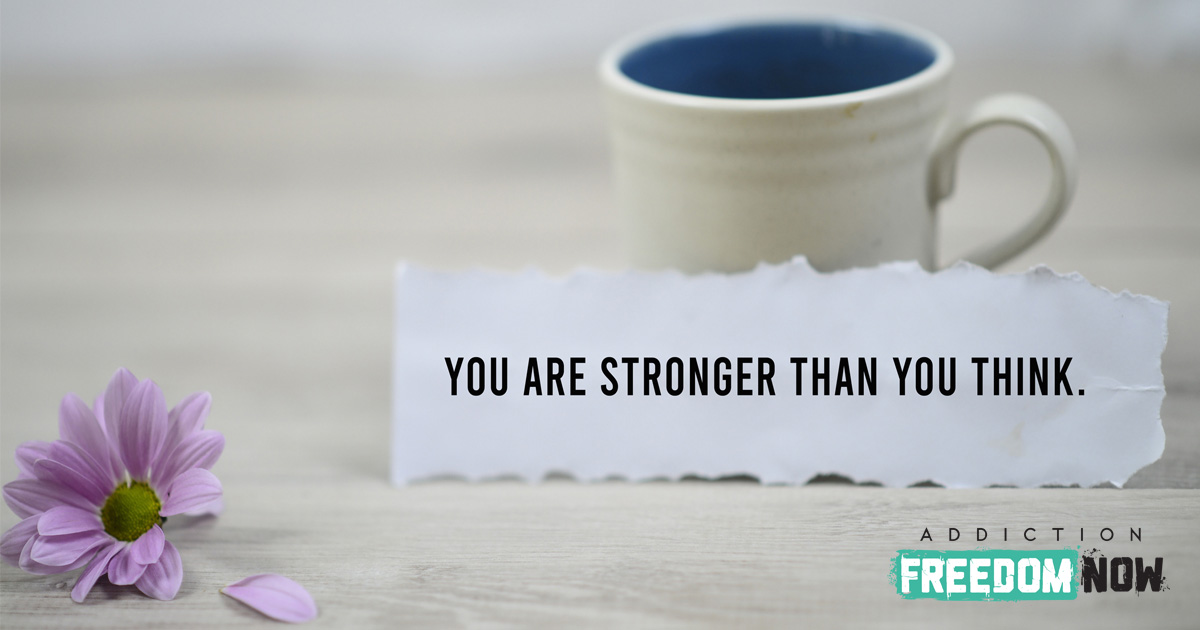While you’re walking on the path toward recovery, it’s important to think positively about the future and do what you can to remain hopeful. We understand that this is sometimes far from easy. Negative thoughts can infiltrate your thinking almost before you realize it, and that can drain your happiness in moments.
To move beyond this negative outlook, it’s important to know what negative thinking truly is. Then, you can develop strategies to combat it and learn how to think in a more positive manner. The goal is to look toward a brighter future after entering recovery for your substance use disorder (SUD).
What Is Negative Thinking?
Negative thinking is something that everyone experiences. However, for some individuals, it’s a constant thought process. Negative thinking is automatic, and the negative thoughts associated with it usually refer to oneself.
While there is no documented condition officially termed negative thinking disorder, negative thinking is often associated with other disorders, such as obsessive-compulsive disorder (OCD) and generalized anxiety disorder (GAD), and can lead to other mental health disorders. In response to these co-existing conditions, these individuals may attempt to quiet negative thinking or attenuate other symptoms of a mental health disorder with the use of drugs or alcohol. In fact, at least one in four people who struggle with a mental health disorder also struggle with SUD.
Types of Negative Thinking

Negative thinking can manifest in many different ways, which can lead to issues such as social anxiety, depression, stress, and potentially even SUD. Below are six common examples of negative thinking patterns.
Jumping to Conclusions
In this thinking pattern, you make an assumption about something or someone even though there are no facts to support your conclusion. For example, someone who jumps to conclusions may determine someone is thinking negatively about them (sometimes referred to as “mind reading”). Others may predict things will turn out poorly and believe their prediction is factual (also called “fortune telling”).
Using “Should” Statements
Using “should,” “ought,” or “must” in your thinking can cause you to feel guilty and disappointed about what you’re currently doing in life. Most of the time, these statements are unrealistic; when directed at others, they can cause anger and frustration. “Should” is a word that negative thinkers use as motivation, but it only breaks them down more.
Catastrophizing
This occurs when you exaggerate events and convince yourself that the worst possible result will happen, even if there is no evidence to support it. Many individuals who catastrophize don’t consider more realistic and likely scenarios. Unfortunately, catastrophizing can often lead to relapse.
Overgeneralization
If one negative experience influences your present experiences, you are likely overgeneralizing. This thinking pattern will have you believing that the worst will happen due to one unpleasant experience in the past. A more extreme form of this is called “labeling.” Attaching a label to yourself or someone else affects how you feel about the target of your label. For example, if you were to attach “I’m bad at sports” to yourself, you might feel negative about situations that involve sports or outdoor activities.
Ignoring the Positive
Ignoring the positive means believing your achievements and other positive experiences don’t count. Why one might believe this varies, but in this thought pattern, you believe your positive experiences mean nothing despite your everyday life contradicting this belief. Many people who struggle with SUD can develop this mentality and begin to believe everything positive they have to offer is canceled out by their SUD.
Personalization
If you’ve ever heard someone blame themselves for a negative situation happening, you’ve witnessed personalization. Personalization occurs when people believe that they themselves are the reason for negative events happening. Usually, they have no control over said events, but they take it personally and internalize the negative feelings that come along with it. Personalization is irrational and not a healthy way of looking at any situation.
How To Stop Negative Thinking
If you’re feeling unmotivated in your recovery from SUD due to negative thoughts, there are ways to manage them. However, negative thinking doesn’t just stop. Instead, you’ll need to take a cue from many individuals who seek treatment for anxiety and depression and find ways to manage your thoughts.
Some researchers have theorized that attempting to stop thoughts completely may intensify them until they become more damaging. That’s why the idea is to work with the thoughts in your head, not against them. Focus on how you think in the present and what the consequences of your thinking may be, then utilize strategies to change your thoughts.
Mindfulness Meditation For Negative Thoughts

While there are numerous strategies people have used to manage their negative thinking patterns, mindfulness is one of the most common—and the most effective, since it requires you to take a thorough look at your current thoughts.
Mindfulness involves paying attention to what is going on inside and outside the body at any given moment. Through mindfulness meditation, you learn to detach yourself from your thoughts and emotions so you can view them from the outside. In this way, mindfulness allows you to become more self-aware and conscious of your thoughts. Throughout this process, you learn to gain control of your emotional reactions to certain events by letting go of negative thoughts, not stopping them.
Mindfulness meditation can both reduce the impact of negative thoughts and improve your mental health. A study published by the CDC stated that people who utilized meditation and yoga improved their mental health and reduced the effects of negative stress. Another study showed that people who practiced mindfulness had a less severe reaction to seeing negative imagery. Negative thoughts still occurred, but the emotional reaction was diminished compared to those who weren’t practicing mindfulness.
Focusing on breathing during a meditation session is a common tool used while practicing mindfulness. We sometimes forget how powerful breathing can be but focusing on how fast and hard you’re breathing helps you become more aware of how your body is responding to what’s going on around you.
Using Mindfulness as a Recovery Tool
Recovery programs utilize mindfulness as a tool to help people with SUD walk a path toward healing and hope. Taking the first step toward change can be a struggle, but it’s also the most crucial step in the process. We’ve encountered many people who struggled with negative thinking patterns, including thoughts such as “should I be here?” and “will I relapse?” Through mindfulness strategies, people can reshape how they think and begin walking toward a brighter future.
Mindfulness helps people with SUD feel they have control of their lives again. Rather than feel helpless, in the dark, and controlled by your substance of choice, you can become more self-empowered and ready to navigate any difficult situations that arise. Mindfulness can be performed in any scenario, whether you’re meditating, performing yoga, taking a walk, or even eating. Mindfulness techniques can help you understand your mind and deal with the negative thoughts that cause relapse. Mindfulness meditation is also a very beginner-friendly tool and requires few resources to perform.
Other Ways to Think Positively
Overcoming negativity in addiction recovery is a monumental task, but it’s a task many people before you have found success with. Of course, thinking positively is much easier said than done. It’s difficult to change how you’ve been thinking about the world, especially if you are just beginning recovery.
We have established that stopping your negative thoughts isn’t effective but managing them is a step in the right direction. Below are some strategies to help you manage your thoughts and think more positively about the future.
Replace the Thought

Many individuals who engage in cognitive behavioral therapy (CBT) also use mindfulness during SUD treatment. For these individuals, replacing the thought is a strategy that is used to manage negative thoughts and reframe how the mind thinks. This takes time and effort, but it’s a process that can yield positive results. If there’s a therapist involved to guide them through the process, it allows the individual to converse with someone about the negative thought.
When you’re replacing a negative thought, there are many ideas for you to consider.
For example, if you’re thinking, “I’m going to relapse; I shouldn’t be here,” we might encourage you to:
- Think about how realistic this thought is.
- Think about past experiences and determine if these thoughts are related to what happened in those experiences.
- Consider what you gain or lose by continuing to think about this thought.
- Think about if this is a cognitive distortion, such as jumping to conclusions or using “should” statements.
- Think about what you would say to another person if they had this same thought.
Replacing thoughts with more realistic ones, not just positive ones, helps to challenge your negative thinking. However, if you replace a negative thought with a positive thought that isn’t realistic, you could set yourself up for failure. For that reason, if positive thoughts are tough to consider, neutral thoughts can be a safe middle ground. Neutral thoughts tend to be more realistic, as well. With practice, replacing negative thoughts makes it easier to control your emotions when negativity crosses your mind.
Write It Down

The brain can get overwhelmed with negative thoughts, and the more they pile up, the harder it becomes to manage them. If you find yourself thinking the same thought over and over, one strategy to consider is to write it down. This helps put the thought on paper and helps you internalize it differently. You might write down a thought and realize it’s unrealistic by reading it on paper. If you’re working with a therapist or just want to chat with a friend, you might tell them what you’ve written down. Not only does this help you remember what thoughts have crossed your mind, but it also helps you process them differently.
In addition, consider whether you want to write down the thought itself or also write about other details. For example, if you remember and replay a bad experience you had while using a substance in the past, you might also write down how you felt at that point, how you felt remembering the experience in the present day, or what physical symptoms you felt when remembering that experience. Writing down your thoughts can help you identify thinking patterns and understand how you think rather than how you emotionally react.
Practice Stress Relief Activities
There might be times when you feel overwhelmed by your negative thoughts. If you’ve done what you can to reshape your thoughts but still feel on edge, there are a number of stress relief exercises you can try. For example, listen to music that you find relaxing to increase the endorphins your body releases.
Consider going for a walk in the park or visiting the gym for exercise. Exercise benefits not only your physical health but your mental health as well. When you feel more stressed, your adrenaline increases. When you exercise, the body reduces adrenaline and releases endorphins. As a result, your mood can improve, and your negative thoughts may diminish.
Another exercise you can try is focusing on something you’re grateful for. This is a technique used in mindfulness meditation. The goal is to focus on one thing you might take for granted that you know you should feel gratitude for having in your life. For example, if you’re taking a shower, think about how you’re grateful for a clean, warm body and focus on the feeling of the water cleansing your skin.
Talk to a Therapist

Finding a safe space to talk about your negative thoughts is a wonderful way to relieve stress and combat negative experiences. A therapist can help you reframe your negative thoughts as you discuss them, and they can answer any questions or concerns you have about your mental health. Checking in with your therapist regularly not only allows you to discuss what has happened between sessions but also allows you to create a roadmap for the future.
You Can Combat Negative Thinking
You know all too well how people with SUD can get trapped in negative thinking loops. If this describes you, you might not see a way forward, but there is always hope and healing. At Lilac Recovery Center, we strive to help individuals manage their thoughts and look forward to a brighter future. We can’t stop negative thoughts forever, but we can change how we experience and act upon them.
Recovery is a difficult journey, but the reward is well worth the effort. If you are near Greater Phoenix area and need assistance with eliminating SUD and coping with negative thinking patterns, we’re here to help. Our personalized care plans are delivered in our luxury treatment center so you can find recovery in comfort.
Sources
- https://www.verywellmind.com/how-to-change-negative-thinking-3024843
- https://sdlab.fas.harvard.edu/cognitive-reappraisal/identifying-negative-automatic-thought-patterns
- https://www.sciencedirect.com/science/article/abs/pii/S0272735812000177
- https://www.cdc.gov/pcd/issues/2017/16_0034.htm
- https://www.sciencedirect.com/science/article/abs/pii/S0092656614000877
- https://www.mentalhealth.gov/what-to-look-for/mental-health-substance-use-disorders




